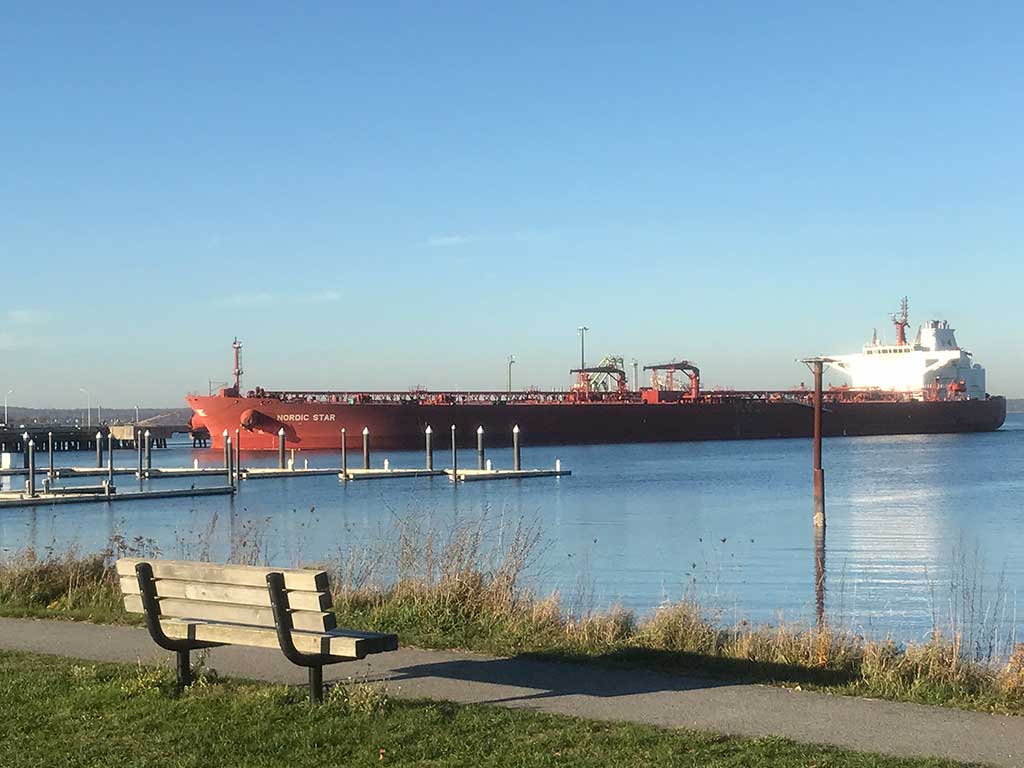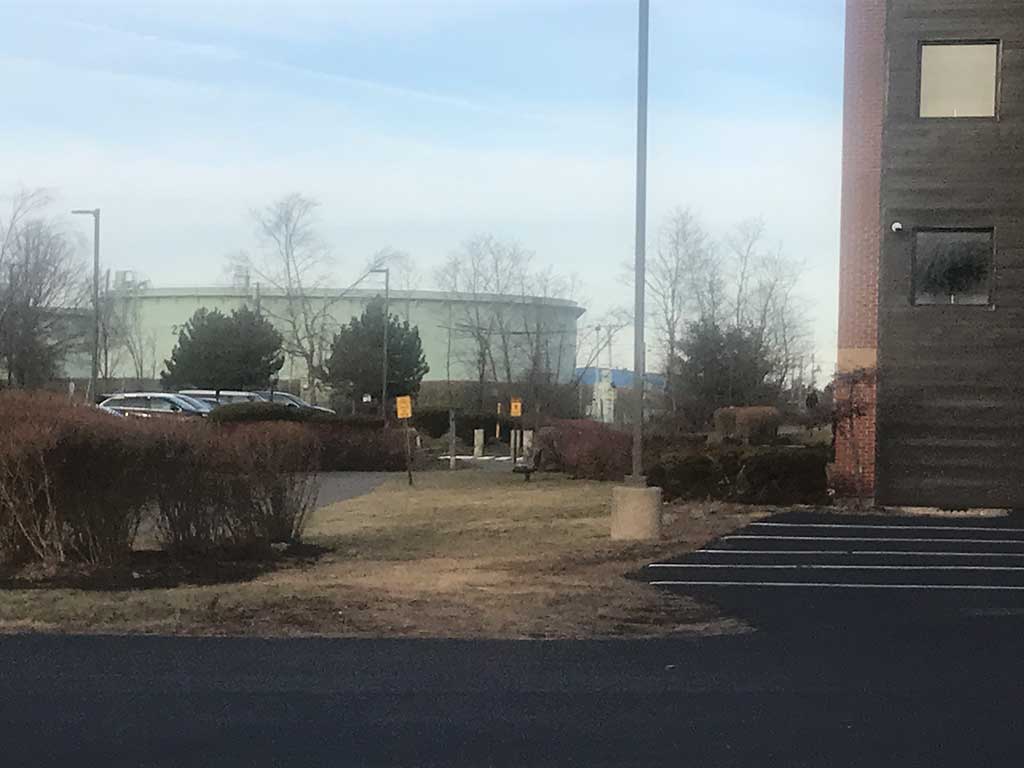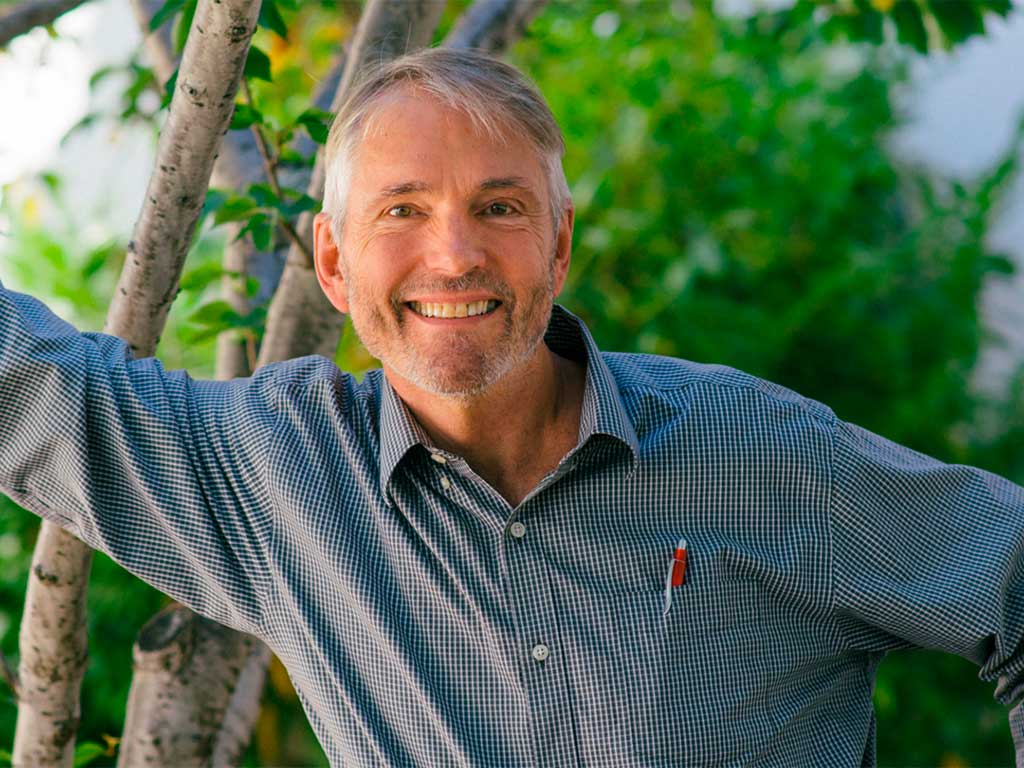CLIMATE JUSTICE FEATURE
Toxic Fumes Part 2
Living in a Sacrifice Zone
By Espahbad Dodd
This is the second installment on the toxic fumes from South Portland tank farms. Read Part I: Toxic Fumes in the West End.

South Portland’s petroleum tank farms are in the midst of peaceful residential neighborhoods just across the Fore River from Portland. Could South Portland be considered a “sacrifice zone?” In such places, the health of local residents appears to be of little concern to those in charge of industry. Frequently referred to as “fence line communities,” these sacrifice zones are scattered throughout the country and follow similar patterns of development.
IDENTIFY THE PROBLEM
In the early 1940s, South Portland was a booming industrial center and a working-class community with a desirable deep-water port. It was an ideal site for the fossil fuel industry to set up shop. They were not subjected to heavy regulation and were free to pretty much do as they pleased. Over the years, however, that changed as environmental awareness and health concerns grew. Toxic chemical smells, previously seen primarily as a nuisance, became a more serious health concern.
Community leaders sought out scientifically reliable data to back their concerns and, despite resource limitations and the lack of political clout, they recognized the need to fight back. They were keenly aware of the monumental power imbalance between industries that emit pollutants and the residents who breathe them.
South Portland citizens are currently challenged by hazardous air pollution; ground and water contamination; schools, daycare, and senior housing far too close to oil tanks; and health concerns from a constant stream of petroleum tank trucks rolling in and out.

The toxic airborne oil stench emitted includes: Benzene, Ethylbenzene, Toluene and Xylene, all of which irritate the eyes, nose, throat, and skin to varying degrees. Headaches, dizziness, lightheadedness, nausea, and vomiting are possible reactions. Certain wind conditions can carry the stench over the Fore River into Portland’s West End.
Those living in fence line communities, eventually reach a push-back point. Tired of enduring disproportionate health sacrifices, they say, “Enough is enough. The problems must be addressed.”
ASK QUESTIONS
In March of 2016, South Portland residents had a rude awakening. The federal Environmental Protection Agency reported that some tanks operated by Global Partners may be emitting as much as twice the amount of dangerous emissions for which they were licensed — going back as far as 2012.
Residents’ inquiries didn’t go anywhere. They frequently heard, “It will take time to gather the information,” from the Maine Department of Environmental Protection (DEP). Straight answers were seldom given. Is it safe for our children to play outdoors? Do I need to keep the windows closed when I smell burning oil or tar? Should we eat the vegetables grown in our garden? Clear answers were not forthcoming. In fact, the DEP alleged they had neither the personnel nor financial ability to conduct a proper health study. In essence, oil tank companies were left to monitor their own emissions via a mathematical formulation created by the American Petroleum Institute.
EDUCATE & ORGANIZE
Thrown back on their own resources, grassroots leaders from Protect South Portland moved to organize and better educate themselves about emissions. To do so they had to learn “to talk in parts per million and parts per billion.” They’d faced big challenges before. Consider when, with the city, they successfully opposed the reversal of the Portland to Montreal Pipeline in 2013.
Their current concerns, however, required them to be knowledgeable not only about the negative health risks but also about public speaking, attracting media coverage, and giving concise interviews with memorable content. If state officials and corporate officers were to take appropriate action, the pressure of public attention needed to be focused on the problem. Time, persistent effort, and courage were required.
Organizers sought the help of outside experts. They needed to translate complex reports about chemical releases and exposure rates into lay terms. The City Council, its Clean Air Advisory Committee, and others wanted to reassure citizens that, going forward, they had safe, clean air to breathe. They knew that long-term exposure to toxins could have a negative impact on the heart, circulatory system, and liver. What is an acceptable amount of risk? Is risking the health and development of children breathing in toxic emissions worth it? When there are threats of serious damage from harmful actions by industry or government, the “precautionary principle” takes precedence over scientific uncertainty in favor of prevention.
MONITOR & INFORM
Cancer and effects on the nervous system are major concerns according to David O. Carpenter, M.D., Director, Institute for Health and the Environment, University at Albany. Evidence from grab sampling (in South Portland) clearly show that levels of both benzene and naphthalene are often above the Ambient Air Guideline near tank farms. In Carpenter’s opinion these levels “should not be tolerated, as they pose a direct threat to the health of those living nearby. The city and state should require that the industry never exceed these guidelines.”
People living nearest to the tanks need to know the extent to which their health is being compromised by these toxic fumes. Emission monitoring is vitally important.

Responding to citizen pressure, the Maine DEP finally set up five ambient monitoring stations. The siting of these locations was not to determine the impact of tank farm emissions but to look at air pollution across the city. Nonetheless, these stations showed elevated levels of naphthalene and benzene. The EPA considers both hazardous air pollutants by the EPA. Benzene is a known carcinogen for which some experts say there should be zero tolerance standard.
The Clean Air Advisory Committee recommends fence line monitoring. EPA Region 1 scientist Patrick Byrd proposed likewise in 2016. It was never funded. And yet, there is a low-cost method that could easily be implemented by citizen scientists to monitor some emissions for as little as $1500 a month.
REDUCE EMISSIONS
Technology that is capable of radically reducing tank emissions already exists. There can be little justification for not taking immediate action to install Vapor Recovery Units as required by other states (such as Massachusetts). Oil companies would, of course, have to foot the bill for the necessary equipment as a cost of doing business in Maine.
Environmental engineer, David Falatko, who lives near the tanks and has studied and reported on different aspects of the issue. He says, “These facilities are close enough together as to be considered contiguous… and their combined discharge would constitute a ‘major’ source. They should be regulated as such and required to control their emissions. Instead, the DEP has granted several of them ‘synthetic minor’ source status exempting them from ‘major’ source requirements.”
CALL TO ACTION
Grassroots community leaders have assumed the mantle of environmental justice and health equity to pit themselves, once again, against the oil industry in a struggle that’s not a sprint but more like a marathon. Protect South Portland currently seeks to broaden its outreach and impact by forming a coalition with other environmental groups. And a bill currently going before the State Legislature could, finally, bring the power and resources of the State’s Department of Environmental Protection to bear on the problem.
Former Portland City Councilor and State Representative Jon Hinck is blunt, “The SoPo tanks pose two problems. Air emissions and related health impacts can and should be fixed now. But we also want to end our dependence on fossil fuels. We can start by ending all subsidies and planning for removal of the tanks.”
We want to know that Portland and South Portland air is safe to breathe. As Naturopathic Doctor Priscilla Skerry said, “Preventing the escape of harmful petroleum vapors into the air we all breathe will go a long way toward protecting people, our environment, and future generations.”
Espahbad Dodd
Espahbad Dodd lives on State Street in the West End. He is a member of the Portland Climate Action Team and the primary editor of that team’s monthly Bright Ideas column in The West End News. Readers may reach him at espahbad@gmail.com. He welcomes feedback.
Disclosure: Publisher-Editor Tony Zeli is a board member of Green Initiatives Education Fund, an organization that that has advocated against the reversal of the Portland to Montreal Pipeline to carry tars sands through South Portland.






1 Comments
Pingback: An Ongoing David Vs. Goliath Struggle Against Big Oil and for Clear Skies - The West End News